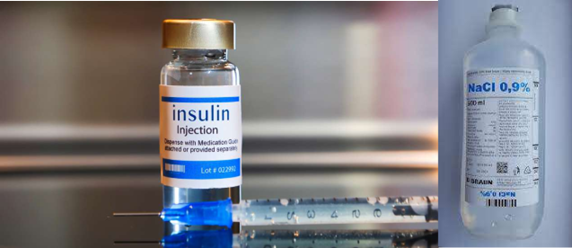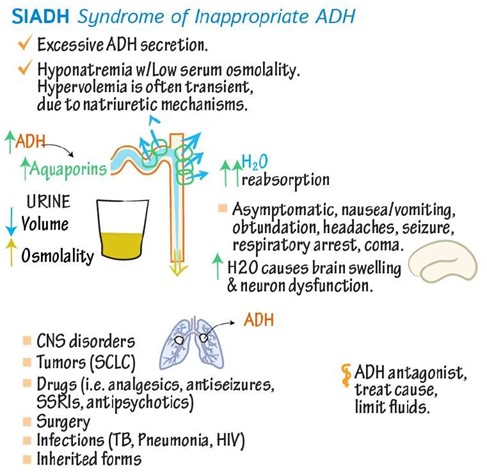Which of the following would be the best indicator of adequate hydration?
Increased urine output.
Decreased urine output.
Dry mucous membranes.
Hypertension.
The Correct Answer is A
Increased urine output is a sign of adequate hydration, as it means the kidneys are filtering waste and fluids from the body through the urine. The urine should be pale straw or lemonade colored, which indicates good hydration.
Choice B is wrong because decreased urine output is a sign of dehydration, as it means the kidneys are not working well and waste products are accumulating in the blood.
The urine may be dark and strong smelling, which indicates poor hydration.
Choice C is wrong because dry mucous membranes are a sign of dehydration, as they indicate a lack of fluid in the body tissues.
Choice D is wrong because hypertension is not a direct indicator of hydration status, although dehydration can cause low BP due to reduced blood volume.
Nursing Test Bank
Naxlex Comprehensive Predictor Exams
Related Questions
Correct Answer is ["A","B","E"]
Explanation
The nurse should anticipate administering 0.9% sodium chloride solution and regular insulin infusion to a client with diabetic ketoacidosis (DKA).

Choice A is wrong because 0.45% sodium chloride solution is a hypotonic fluid that can cause cerebral edema in DKA patients.
Choice C is wrong because 5% dextrose in water solution can increase blood glucose levels and worsen hyperglycemia in DKA patients.
Choice D is wrong because lactated Ringer’s solution contains lactate, which can be converted to bicarbonate and cause metabolic alkalosis in DKA patients.
Normal ranges for blood glucose, pH, bicarbonate, and ketones are as follows3: Blood glucose: 70-130 mg/dL before meals, and less than 180 mg/dL after meals pH: 7.35-7.45
Bicarbonate: 22-26 mEq/L Ketones: negative or trace
Correct Answer is A
Explanation

SIADH is a condition in which your body makes too much antidiuretic hormone (ADH), which controls how your body releases and conserves water.
SIADH makes it harder for your kidneys to release water and causes the levels of electrolytes, like sodium, to fall due to water retention.
This leads to hyponatremia, which is when you have low levels of sodium in your blood.
Choice B is wrong because hypernatremia is when you have high levels of sodium in your blood.
This can occur due to dehydration, excessive salt intake, or kidney problems.
Choice C is wrong because hyperkalemia is when you have high levels of potassium in your blood.
This can occur due to kidney failure, acidosis, or certain medications.
Choice D is wrong because hypokalemia is when you have low levels of potassium in your blood.
This can occur due to vomiting, diarrhea, diuretics, or alkalosis.
Whether you are a student looking to ace your exams or a practicing nurse seeking to enhance your expertise , our nursing education contents will empower you with the confidence and competence to make a difference in the lives of patients and become a respected leader in the healthcare field.
Visit Naxlex, invest in your future and unlock endless possibilities with our unparalleled nursing education contents today
Report Wrong Answer on the Current Question
Do you disagree with the answer? If yes, what is your expected answer? Explain.
Kindly be descriptive with the issue you are facing.
